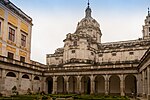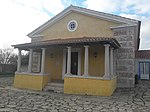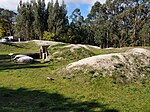Mafra, Portugal

Mafra (Portuguese pronunciation: [ˈmafɾɐ] ) is a city and a municipality in the district of Lisbon, on the west coast of Portugal, and part of the urban agglomeration of the Greater Lisbon subregion. The population in 2011 was 76,685, in an area of 291.66 km2.It is mostly known for the sumptuous Mafra National Palace inscribed as a UNESCO World Heritage Site. Built in the baroque style, the Mafra National Palace also inspired Portuguese Nobel Prize laureate José Saramago to write his novel Baltasar and Blimunda (Memorial do Convento). Other points of interest around the municipality include the Tapada Nacional de Mafra, an enclosed wildlife and game reserve, and Ericeira's World Surf Reserve, the second in the world.
Excerpt from the Wikipedia article Mafra, Portugal (License: CC BY-SA 3.0, Authors, Images).Mafra, Portugal
Praça do Município,
Geographical coordinates (GPS) Address Nearby Places Show on map
Geographical coordinates (GPS)
| Latitude | Longitude |
|---|---|
| N 38.941111111111 ° | E -9.3319444444444 ° |
Address
Câmara Municipal de Mafra
Praça do Município
2640-542 (Mafra)
Portugal
Open on Google Maps









